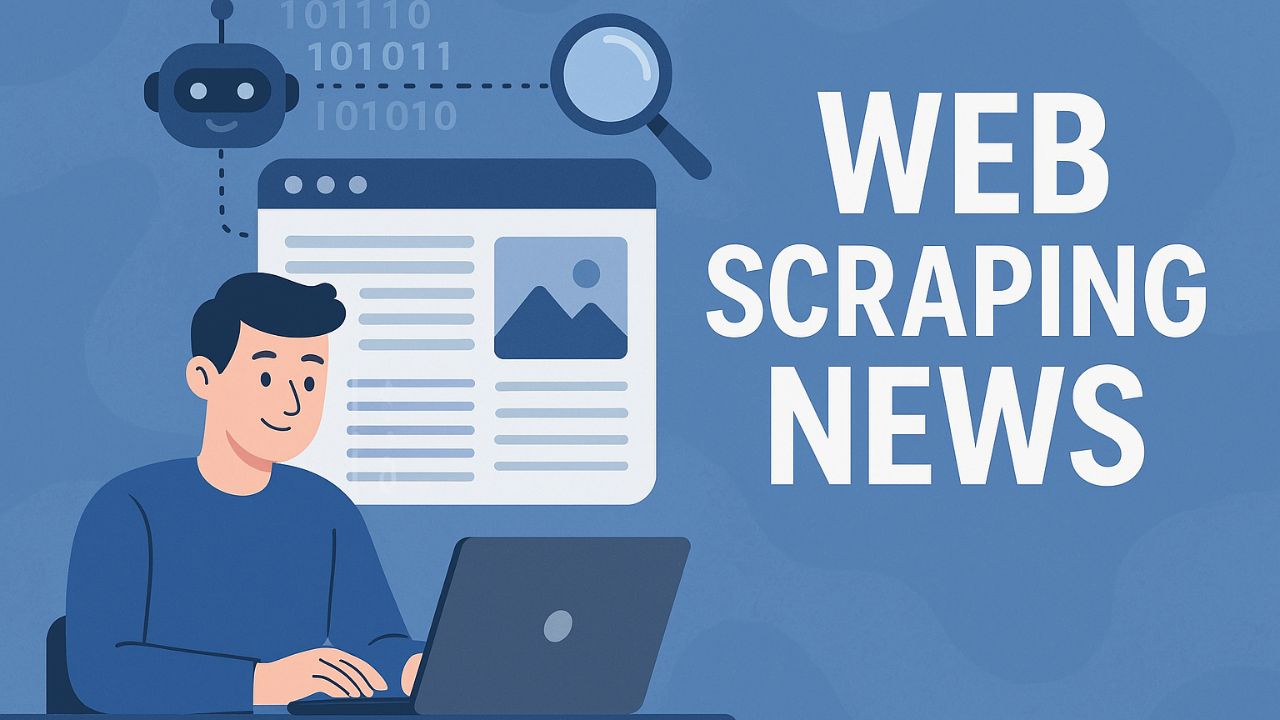Web Scraping and Crawling: A Comprehensive Guide with Crawl for AI
Web scraping and crawling are powerful techniques for extracting data from websites, but the process can be complex and involves various considerations. This comprehensive guide explores different methods, tools, and best practices for effective web data extraction.
Understanding Web Scraping vs. Web Crawling
While often used interchangeably, these terms refer to distinct processes:
- Web Scraping: The process of automating data extraction from websites, targeting specific content from individual pages.
- Web Crawling: The automated process of visiting multiple websites or pages, following links from one page to another to discover content.
Basic Web Scraping with Python Requests
The simplest approach to web scraping uses Python’s requests library to send HTTP requests and retrieve HTML content:
import requests
def main():
response = requests.get('https://example.com/articles')
with open('response.html', 'w') as f:
f.write(response.text)
if __name__ == '__main__':
main()
This approach works well for simple, server-side rendered websites but has significant limitations:
- It fails on client-side rendered sites (SPAs)
- It doesn’t handle sites with bot detection
- The HTML structure might change, breaking your extraction logic
- You need additional tools like Beautiful Soup to extract meaningful content
Advanced Web Scraping with Playwright
For more complex scenarios, browser automation tools like Playwright provide better capabilities:
from playwright.sync_api import sync_playwright
with sync_playwright() as p:
browser = p.chromium.launch(headless=False)
page = browser.new_page()
page.goto('https://x.com/specific_post')
page.wait_for_timeout(10000)
page.screenshot(path='screenshot.png')
browser.close()
Playwright offers several advantages:
- It can handle client-side rendered applications
- It can interact with the page (clicking buttons, filling forms)
- It can take screenshots for visual analysis
- It can execute JavaScript on the page
However, it still struggles with bot detection on sophisticated sites.
Crawl for AI: A Comprehensive Solution
Crawl for AI is a powerful Python package that simplifies web scraping and crawling, offering numerous advantages:
from crawl_for_ai import AsyncWebCrawler, CrawlerRunConfig
async def main():
crawler = AsyncWebCrawler()
config = CrawlerRunConfig(
exclude_images=True,
exclude_social_media_links=True,
check_robots_txt=True
)
result = await crawler.a_run('https://example.com/articles', config=config)
with open('result.md', 'w') as f:
f.write(result.markdown)
if __name__ == '__main__':
import asyncio
asyncio.run(main())
Key Features of Crawl for AI
- Automatically extracts meaningful content without requiring LLM processing
- Provides content in multiple formats (HTML, Markdown, plain text)
- Handles bot detection effectively on many sites
- Respects robots.txt files (configurable)
- Offers deep crawling capabilities
- Categorizes extracted links (internal vs. external)
- Provides screenshot capabilities
- Supports filtering and customization options
Deep Crawling Configuration
For crawling multiple pages on a website:
from crawl_for_ai import BFSDeepCrawlStrategy, DomainFilter, ContentTypeFilter
filter_chain = [
ContentTypeFilter(allowed_types=['text/html']),
DomainFilter(allowed_domains=['example.com'])
]
deep_crawl_strategy = BFSDeepCrawlStrategy(
max_depth=2,
filter_chain=filter_chain
)
config = CrawlerRunConfig(
deep_crawl_strategy=deep_crawl_strategy,
stream=True # Process results as they arrive
)
Crawl for AI API
Besides using it as a Python library, Crawl for AI also offers a Docker-based API service with a playground interface, making it accessible through HTTP requests:
curl -X POST http://localhost:11235/crawl \
-H "Content-Type: application/json" \
-d '{"urls": ["https://example.com"], "crawler_config": {"type": "crawler_run_config", "params": {"streaming": true}}}'
Integrating with AI for Advanced Processing
Web scraping becomes particularly powerful when combined with AI processing:
import os
from openai import OpenAI
from dotenv import load_dotenv
load_dotenv()
client = OpenAI()
def summarize_website(markdown_content):
response = client.chat.completions.create(
model="gpt-4o-mini",
messages=[{
"role": "user",
"content": f"You are an expert website summarizer who excels at capturing and summarizing the core content of a website. Below you find the website content as markdown:\n\n{markdown_content}\n\nPlease summarize this website content and give me some bullet points with the key takeaways."
}]
)
return response.choices[0].message.content
Legal and Ethical Considerations
Web scraping operates in a gray area legally. Consider these important factors:
- Always check a website’s Terms of Service before scraping
- Respect robots.txt files and crawl-delay directives
- Be mindful of rate limiting to avoid overloading servers
- Consider using the check_robots_txt=True option in Crawl for AI
- Some websites (like social media platforms) explicitly prohibit scraping
- Data privacy laws may apply to scraped data
Conclusion
Web scraping and crawling are powerful techniques for extracting online data, with applications ranging from training AI models to competitive analysis. Tools like Crawl for AI significantly simplify the process, handling many common challenges automatically. However, always approach web scraping with consideration for legal implications and website owners’ preferences.
